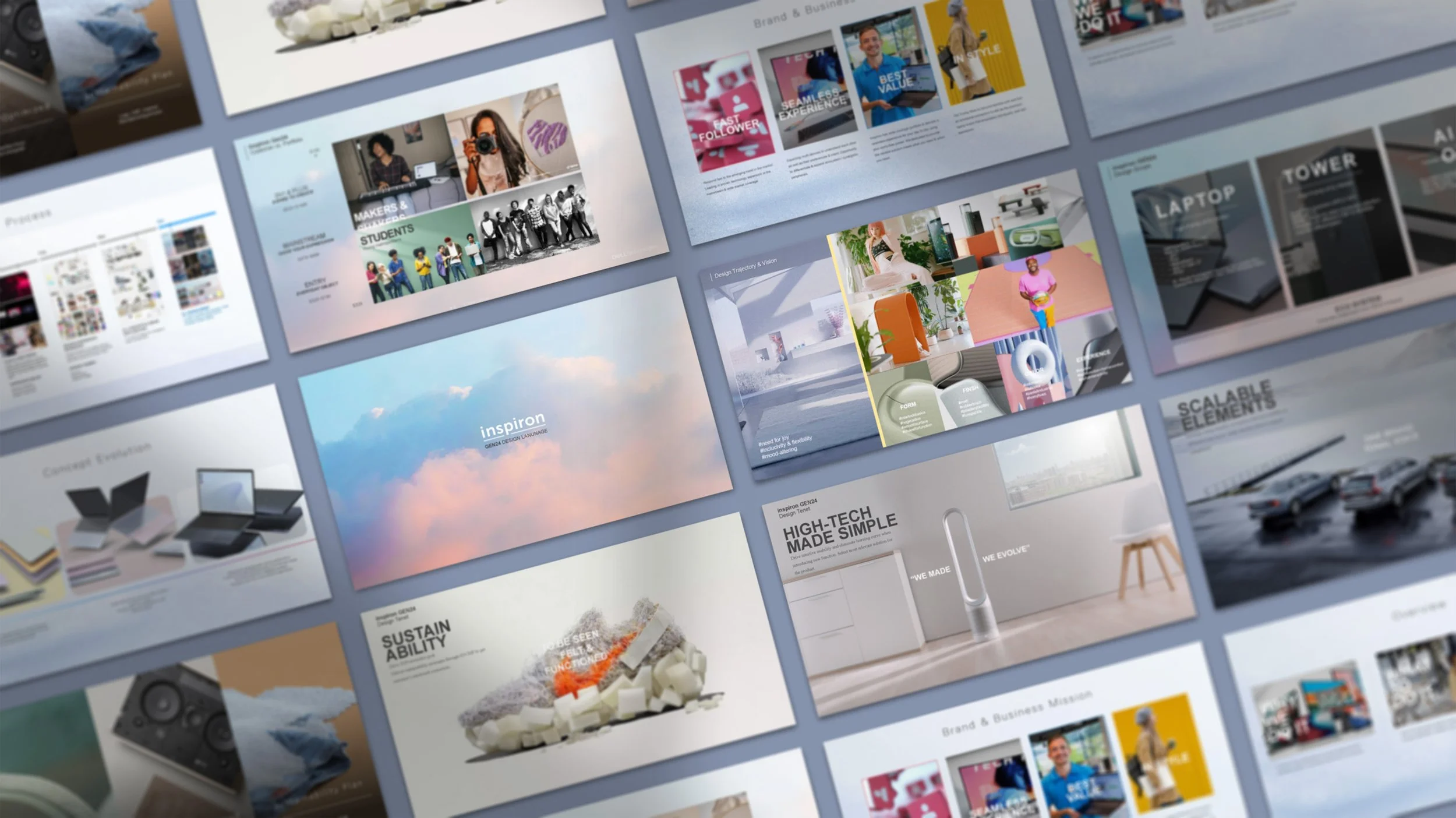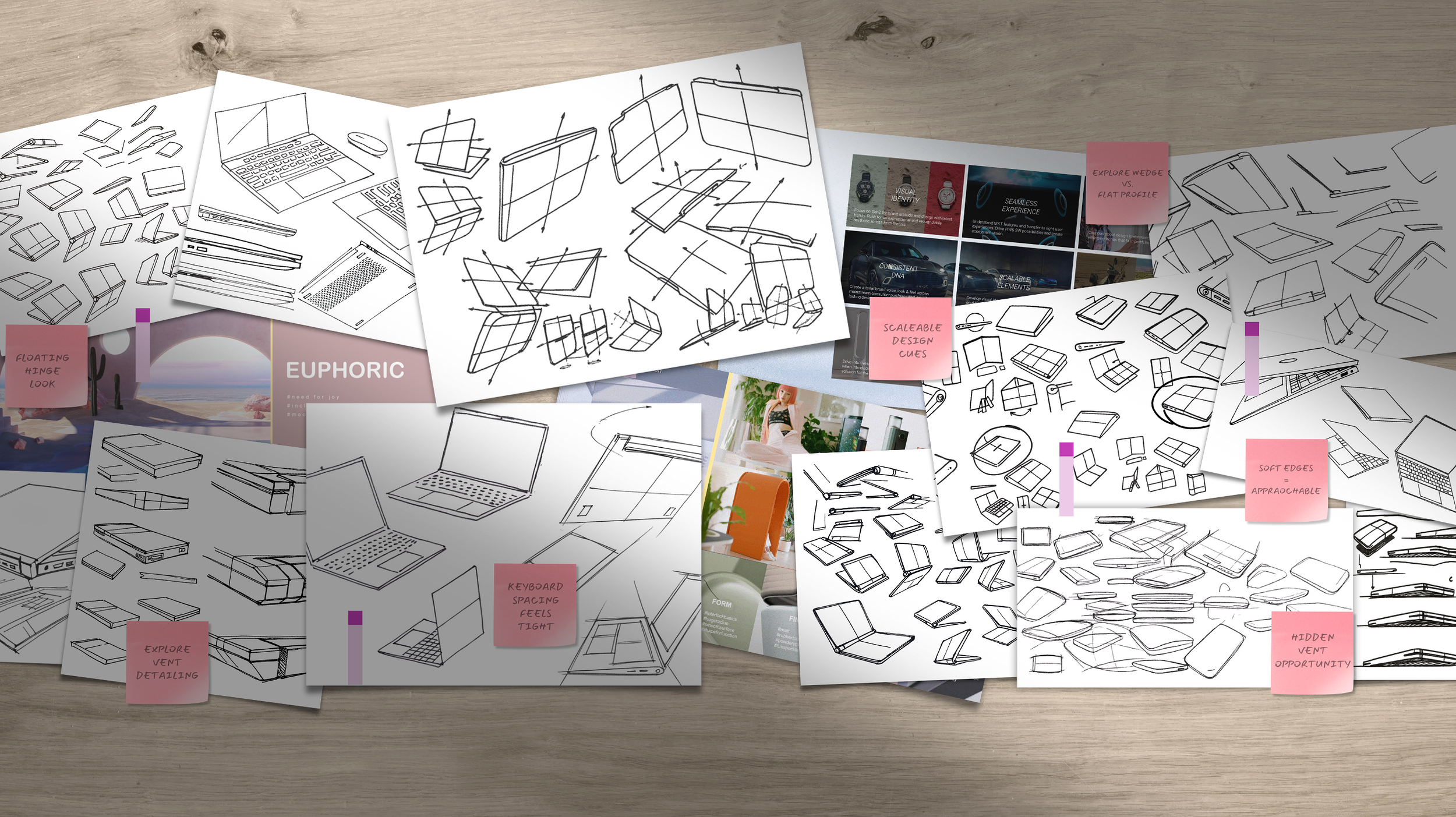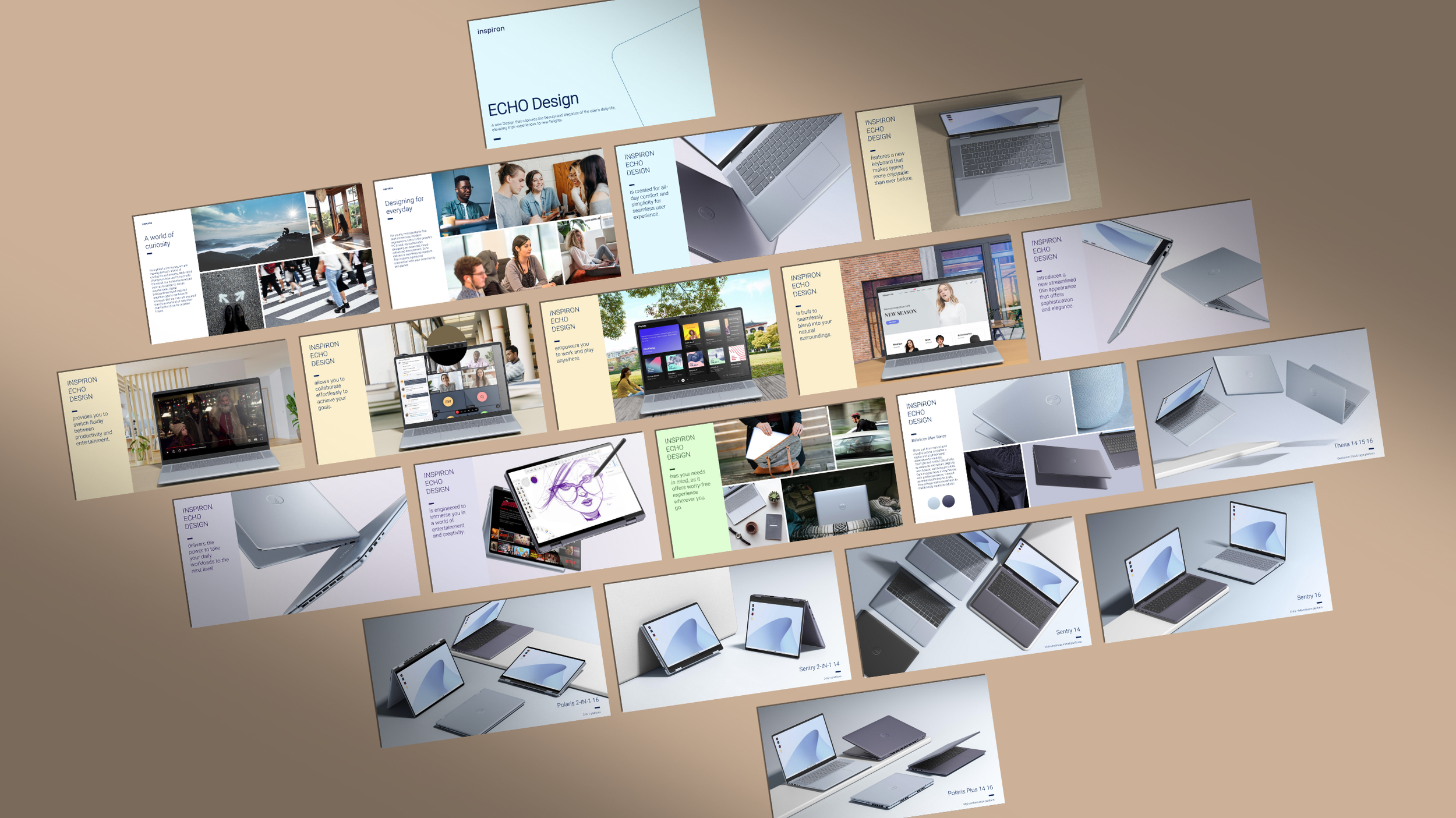Dell — Design Language Development
During my time with Dell Technologies, I joined the Consumer Design team as an Industrial Design contractor at a pivotal stage in developing a new consumer design language. My primary focus was on the Inspiron Gen24 laptops, where I contributed to early ideation and refinement through sketches, product architectures, and design explorations informed by user observations and emerging trends. These efforts helped define the design scope and set the foundation for a cohesive design direction that could guide alignment and decision-making across Gen24 and beyond.
Alongside concept development, I worked closely with a Senior Principal Industrial Designer to craft the story behind the new design language. I created the visuals that supported this narrative, ensuring the evolution of Inspiron was communicated clearly to Dell’s broader teams. This storytelling work played a key role in bridging design intent with how the new identity would be understood within the company.
Beyond Inspiron, I contributed to extending the design language across Dell’s wider consumer ecosystem, including Vostro and Inspiron desktop towers as well as All-in-One systems. While some of these projects did not reach production, the process of refining prototypes and testing the language across categories was an important step in shaping a unified, forward-looking identity.
The Dell Inspiron line has been a trusted and valued for its affordability, reliability, and broad appeal. With the next generation Inspiron 24, Dell aimed to build on that legacy while elevating performance, refining the user experience, and introducing a fresh design identity.
As remote work and digital interaction became central to daily life, consumers began spending more time with their devices, creating a new challenge: how to design laptops that remain approachable yet comfortable for extended use.
The result was a new design language, one built on clarity, comfort, and a stronger sense of identity. My role with the Dell Consumer Design team was to help shape its foundations, ensuring it reflected user needs while remaining adaptable across multiple product categories.
Concept Development Overview
Defining Gen24
With the rise of remote work during the pandemic, people began spending significantly more time with their personal devices. This shift created new expectations for comfort, usability, and performance, challenging Dell to rethink how laptops supported extended daily use. The Inspiron Gen24 Design Language redesign became an opportunity to address these evolving needs while building a stronger brand identity.
The goal was to bring Inspiron to a new level, delivering not just improved performance, but a more refined and relevant user experience. Through collaboration, validation, and clear recommendations, the design team worked to shape a future-focused DNA that could extend across Inspiron and the broader Dell consumer ecosystem, unifying products under a shared strategy and design vision.
Early Sketches & Exploration
The project began with broad explorations aimed at defining the foundations of a new Inspiron design language. We developed three thematic pathways (Euphoric, Regenerative, and Reinventing Reality), each representing a distinct vision for how Inspiron could evolve. Alongside these themes, we examined product architectures and assembled user observation and trend boards to capture shifting behaviors and expectations.
This phase was about opening up possibilities: sketching, and comparing ideas that reflected not only form but also how users connect with their devices. Grounded in user-centric insights and emerging cultural trends, the sketches provided an early framework for evaluating directions and aligning discussions. These explorations laid the groundwork for refining proportions, details, and design cues that would define Gen24 and beyond.
Concept Refinement
In this phase, the design concept was refined through strategic color blocking, known as the “Dip.” Select interaction zones were highlighted with contrasting colors to emphasize functional or emotional hotspots. Split tones reinforced form geometry while suggesting playful personalization and a stronger sense of identity. This approach transformed laptops from neutral work tools into expressive lifestyle products.
The dipped areas were then developed into custom function keys and gesture-based inputs, creating a layered hierarchy of interaction. The primary typing zone remained neutral and familiar, ensuring comfort and usability, while the secondary dipped function bar introduced a playful and experimental layer, optimized for modern creative and media workflows.
Ultimately, my concept was not chosen to move forward, but these explorations were invaluable. I gained deeper insight into PC design, the nuances of design language, and the complexities of how laptops are conceived, engineered, and built.
Crafting the Design Story
As the design concept evolved, I collaborated with a Senior Principal Industrial Designer to create a visual story that showcased the breadth and adaptability of the new Inspiron design language. I developed presentation materials that communicated this vision to Dell’s broader teams, emphasizing how the language could scale across different sizes, configurations, and CMF options while maintaining a cohesive identity.
The narrative focused on the purity of form and surfacing detail, expressing the essence of the new language rather than mechanical specifics. Through consistent proportions, soft transitions, and thoughtful material and color application, the design demonstrated how a unified aesthetic could extend seamlessly across Dell’s consumer lineup.





